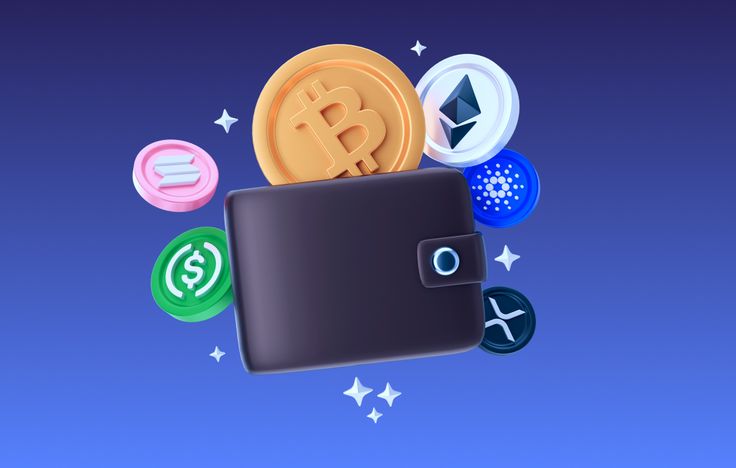Cryptocurrency has become increasingly popular as a new form of digital money, offering freedom, security, and opportunities for investment. But before you can buy or store crypto, you need a crypto wallet. A crypto wallet is a digital tool that allows you to store, send, and receive cryptocurrencies securely. For beginners, setting up a wallet might seem intimidating, but with the right guidance, it’s simple and straightforward. This article will guide you step-by-step on how to set up a crypto wallet, with practical tips to ensure security and ease of use.

What Is a Crypto Wallet?
A crypto wallet is like a digital bank account for cryptocurrencies. It stores your private keys — digital codes that give you access to your crypto — and allows you to interact with blockchain networks. There are several types of wallets:
- Hosted Wallets: Managed by platforms like Coinbase. These wallets are beginner-friendly and include recovery options.
- Non-Custodial Wallets: Wallets where you control your private keys. They offer more control and security but require careful management.
- Hardware Wallets: Physical devices like Ledger or Trezor that store crypto offline for maximum security.
For beginners, a hosted wallet such as Coinbase Wallet is recommended because it combines simplicity, security, and accessibility.
Step 1: Choose the Right Wallet
The first step is deciding which wallet fits your needs. If you are a beginner, consider the following factors:
- Ease of Use: Platforms like Coinbase offer simple interfaces for buying, sending, and receiving crypto.
- Security: Look for wallets with encryption, biometric authentication, and two-factor authentication.
- Recovery Options: Ensure the wallet provides a way to recover your funds if you lose access.
A hosted wallet allows you to get started quickly without worrying about managing complex private keys.
Step 2: Download the Wallet App
Once you’ve chosen your wallet, you need to download the app:
- Visit the official website of the wallet, for example, Coinbase Wallet.
- Download the app on your device — available for both iOS and Android.
- Open the app and follow the instructions for installation.
Downloading from the official source is critical to avoid phishing attacks or fake apps that can steal your funds.
Step 3: Create a New Wallet
After installing the app, it’s time to create your wallet:
- Open the app and select “Create New Wallet.”
- Review and accept the terms of service and privacy policy.
- Set a secure passcode or enable biometric authentication (fingerprint or Face ID).
This passcode or biometric access will protect your wallet from unauthorized use.
Step 4: Secure Your Recovery Phrase
Every crypto wallet provides a recovery phrase, sometimes called a seed phrase. This is a list of 12–24 words that can restore your wallet if you lose access.
- Write the phrase on paper — do not save it digitally to avoid hacking risks.
- Store it in a secure place, such as a safe or safety deposit box.
- The app may ask you to verify the recovery phrase to ensure you wrote it down correctly.
Your recovery phrase is the ultimate key to your wallet. Losing it can result in permanent loss of your crypto.
Step 5: Fund Your Wallet
Once your wallet is set up and secured, you can start adding cryptocurrency:
- Buy crypto directly through the wallet app. Many hosted wallets allow you to purchase popular cryptocurrencies like Bitcoin or Ethereum using a bank account, debit card, or other payment methods.
- Transfer crypto from another wallet by using your wallet’s unique address. Every wallet has a public address, which acts like a bank account number for receiving funds.
Always double-check the address when transferring crypto. A single mistake can result in permanent loss.
Understanding Wallet Features
Modern wallets, especially beginner-friendly ones like Coinbase Wallet, include additional features:
- Send and Receive: Easily transfer crypto to friends, exchanges, or online services.
- Swap/Trade: Some wallets allow you to exchange one cryptocurrency for another within the app.
- Portfolio Overview: Track your crypto balance and value in real-time.
- Security Settings: Enable extra protections such as two-factor authentication and withdrawal confirmations.
Getting familiar with these features will help you manage your crypto efficiently and securely.
Tips for Crypto Wallet Beginners
Here are some key tips to ensure a safe and smooth experience:
- Start Small: Begin with a small amount of cryptocurrency to practice using your wallet before handling larger sums.
- Enable Two-Factor Authentication: This adds an extra layer of security to prevent unauthorized access.
- Regularly Update the App: Updates often include important security patches and new features.
- Backup Your Recovery Phrase: Never skip this step; it’s your ultimate safety net.
- Avoid Sharing Sensitive Information: Never share your recovery phrase, private keys, or passwords with anyone.
Common Mistakes to Avoid
- Ignoring Security: Failing to secure your wallet or backup can result in losing your funds permanently.
- Using Unofficial Apps: Only download wallets from official websites or app stores.
- Sending to Wrong Addresses: Always double-check crypto addresses before sending funds.
- Storing Recovery Phrase Digitally: Storing it on your phone or cloud can expose you to hacks.
By avoiding these mistakes, beginners can enjoy a safe and smooth start in the crypto world.
Why a Crypto Wallet Is Essential
A crypto wallet is not just a storage tool; it’s a gateway to the cryptocurrency ecosystem:
- Security: Safely store your private keys and crypto assets.
- Ownership: Full control over your funds compared to exchange wallets.
- Accessibility: Send and receive crypto anywhere in the world instantly.
- Integration: Participate in DeFi apps, NFT platforms, and other blockchain services.
For beginners, using a hosted wallet balances convenience and security, helping you get started without being overwhelmed.
Final Thoughts
Setting up a crypto wallet is the first step toward becoming a confident crypto user. By following these steps — choosing the right wallet, downloading the app, creating a secure wallet, backing up your recovery phrase, and funding it responsibly — beginners can safely enter the crypto world.
Remember, security is paramount. Always protect your recovery phrase, enable two-factor authentication, and double-check transaction details. Starting small and gradually exploring advanced features will help you grow your knowledge and confidence in managing cryptocurrency.
With a properly set up crypto wallet, you are ready to explore, trade, and participate in the exciting world of digital assets.


